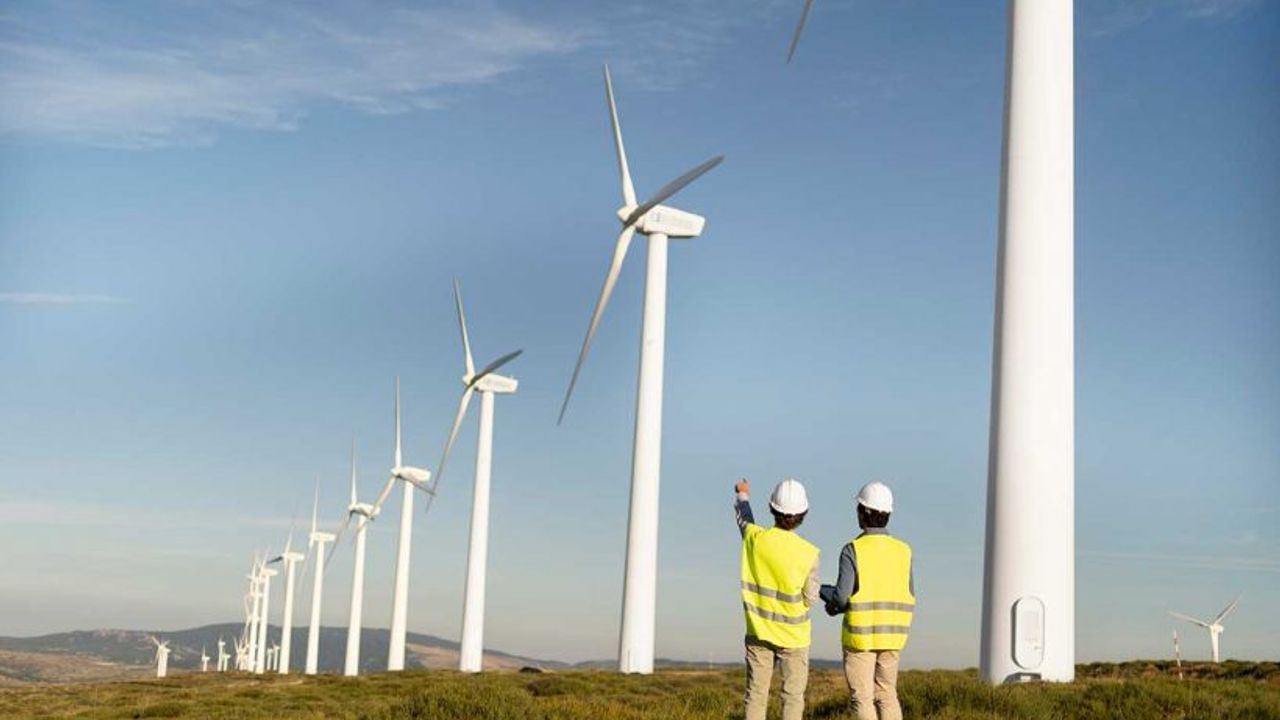In the last quarter of 2023, Europe's electricity generators produced more energy from wind than coal for the first time. This is seen as an important milestone for Europe's regional energy transition efforts.
According to data from the think tank Ember, European utilities generated a record 193 terawatt hours (TWh) of electricity from wind power plants in October-December 2023.
According to Ember data, wind power generation in Europe in the last quarter of 2023 was about 20 percent higher than in the same quarter of 2022.
According to experts who closely monitor the sector, this increase is of great importance despite the widespread disruptions in the wind energy sector in 2023 due to high labor, material and financing costs.
The new policy adopted by the European Parliament at the end of 2023, which envisages financial support for turbine manufacturers, aims to further increase regional wind power production in 2024. With this new policy, wind power is certain to consolidate its dominance over coal in the future.
While additional wind power generation capacity is expected to be widely deployed across Europe in 2024 and beyond, the outlook for coal-fired generation is not yet clear.
Developments in this area will be an important factor in determining how far ahead of coal sustainable wind energy will be in the future.
Germany, Turkey and Poland lead Europe in coal consumption
In particular, the trajectory of coal-fired generation in Germany, Poland and Turkey, which account for around half of Europe's total coal-fired power generation, is of particular importance.
Accordingly, the position of these three countries is also important for Europe as a whole to succeed in its recent policy of shifting away from highly polluting fossil fuels to meet its clean energy target.
Europe's three largest coal consumers reduced coal use in power generation to multi-year lows in the first half of 2023 as weak regional industrial activity reduced overall electricity demand and utilities brought more clean electricity online.
European Parliament backs designation of nuclear and natural gas as 'environmentally friendly'
However, each country increased coal-fired generation in the last months of 2023 as demand for heating increased. However, overall coal-fired generation in each country remained well below previous peaks.
Going forward, overall economic momentum will be the key factor determining how much coal is used in power generation in each country.
If manufacturing activity expands in 2024 due to supportive government policies in countries, then overall energy consumption will also increase. This is likely to force power generation companies to increase production from fossil fuel plants as well as renewables.
In particular, any sustained increase in production in heavy industry, such as chemical, steel and fertilizer plants, is likely to put pressure on national energy systems, requiring more generation from coal and natural gas plants to meet the corresponding increase in overall energy consumption.
Important tenders to be launched in the wind energy sector in Europe
In addition, several government tenders for new wind power capacity, both onshore and offshore, are expected to be launched in 2024, following the signing of regional European Union policy agreements following disruptions to wind power sector operations last year.
According to S&P Global, Germany plans to tender for 8 gigawatts (GW) of new offshore capacity in 2024, while Denmark will announce tenders for a total of 9 GW of offshore projects this year.
France, on the other hand, will not slow down its wind energy investments over the coming year, as it has decided to support the construction of two floating wind farms with a total capacity of up to 280 megawatts (MW) off the south coast.
As these and other projects come online, Europe's total wind output is set to rise to more than 604 TWh in 2023, providing a significant boost to clean energy production. In the short term, meanwhile, coal-fired power generation in Europe could rise as industrial activity picks up.
But if energy companies follow the planned development pipeline, wind power is certain to eclipse coal in Europe's electricity generation in the long term.













